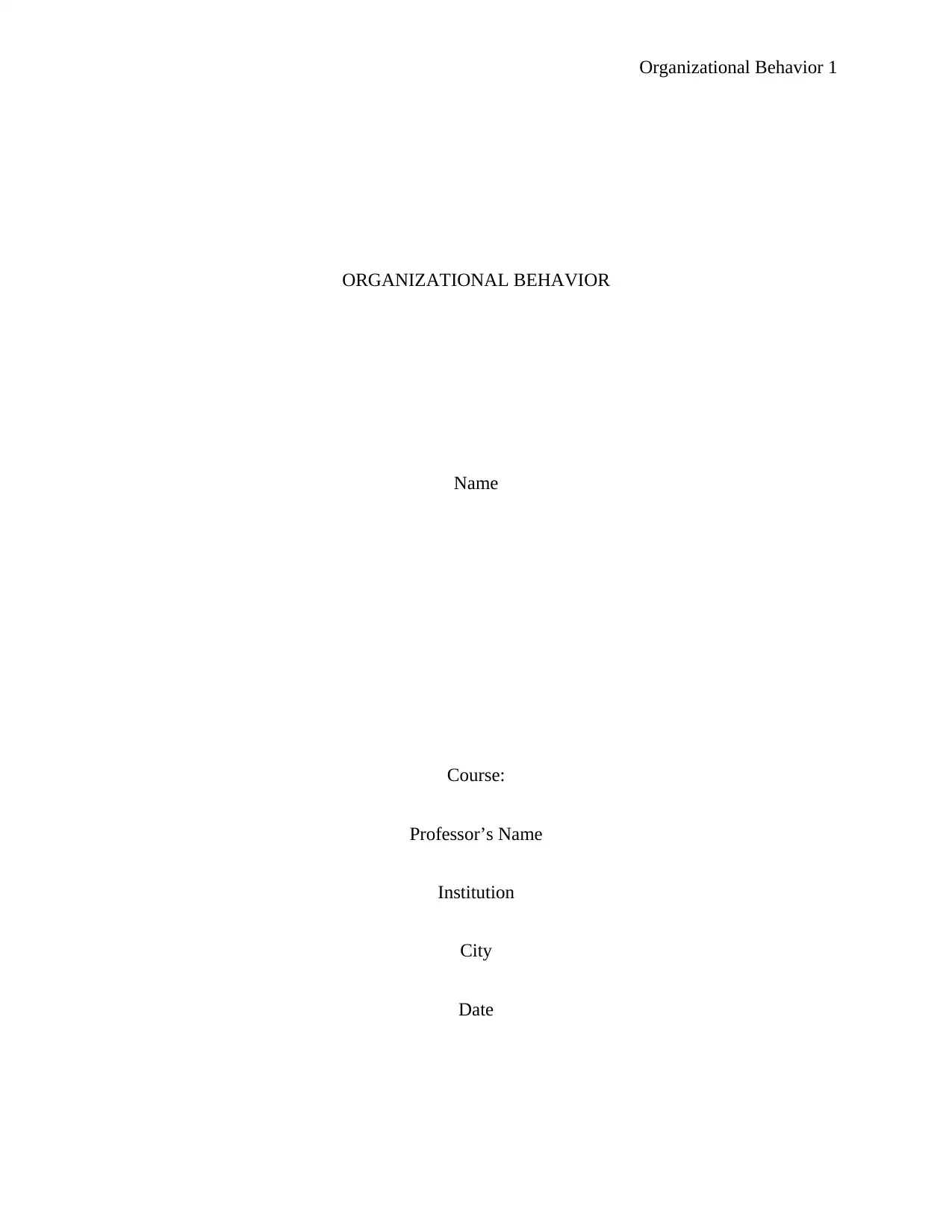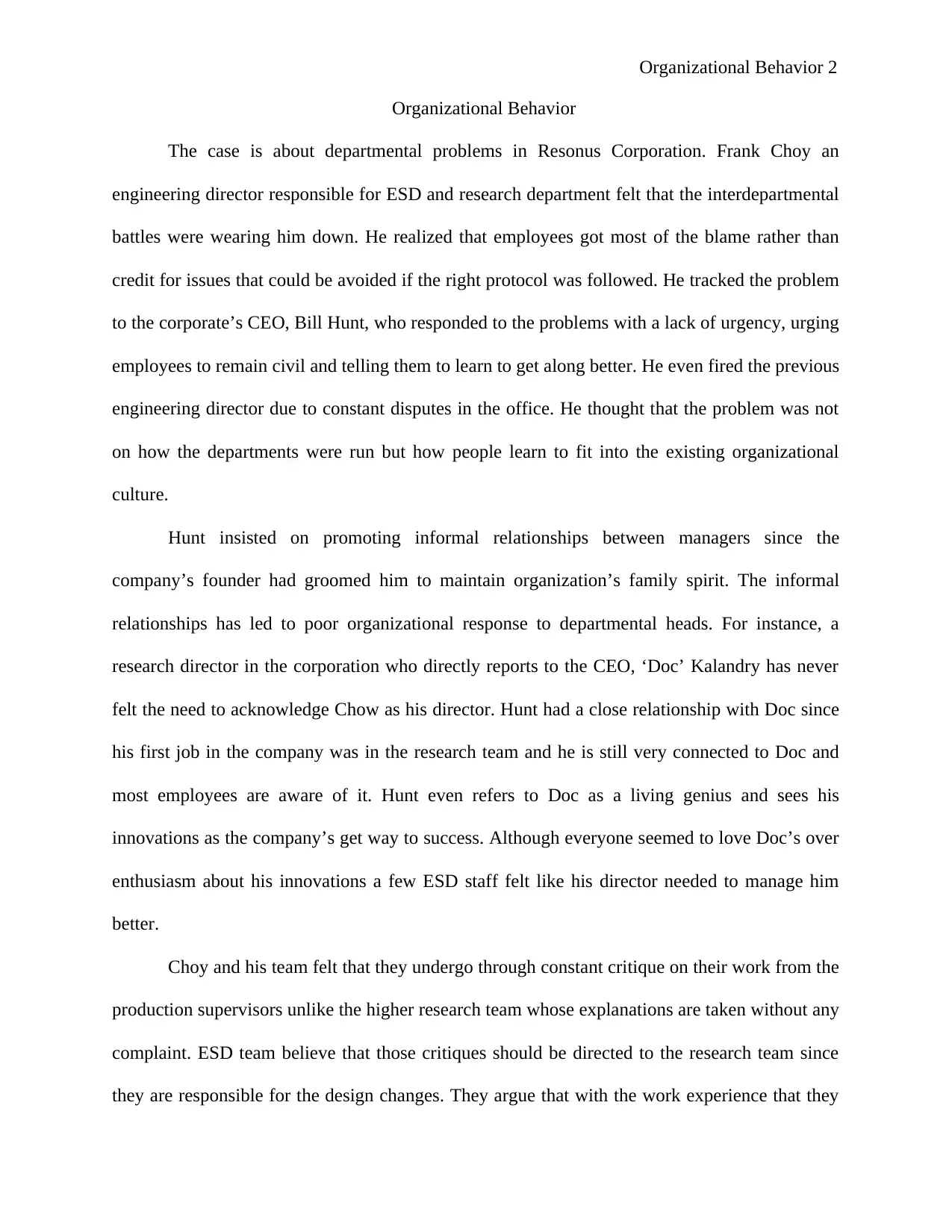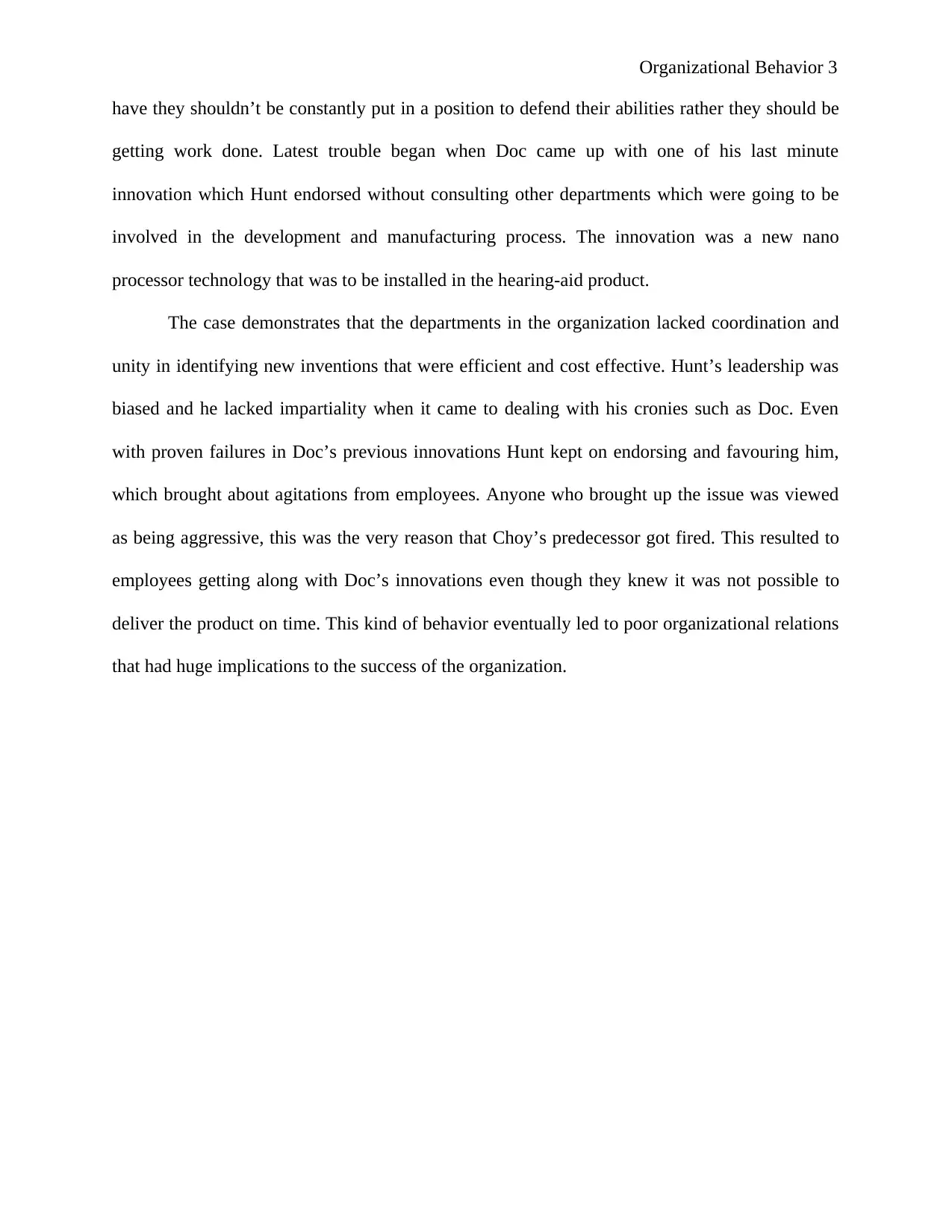Resonus Corporation: A Case Study on Leadership and Behavior
VerifiedAdded on 2020/04/01
|3
|585
|52
Case Study
AI Summary
This case study examines the organizational behavior within Resonus Corporation, highlighting the challenges posed by the CEO's leadership style and its impact on departmental relationships. The case focuses on the Engineering Director, Frank Choy, and his frustrations with the company's culture, which favors certain employees, particularly those in the research department, leading to conflicts and inefficiencies. The CEO's bias towards a favored employee, along with a lack of effective communication and coordination between departments, results in poor project outcomes and employee dissatisfaction. The analysis underscores the importance of impartial leadership, effective conflict resolution, and the need for a cohesive organizational structure to ensure project success and foster a positive work environment. The case details the negative consequences of the CEO’s actions, including delayed product development, and a decline in employee morale. The study reveals how informal relationships and favoritism can undermine organizational effectiveness and lead to significant challenges.
1 out of 3







![[object Object]](/_next/static/media/star-bottom.7253800d.svg)